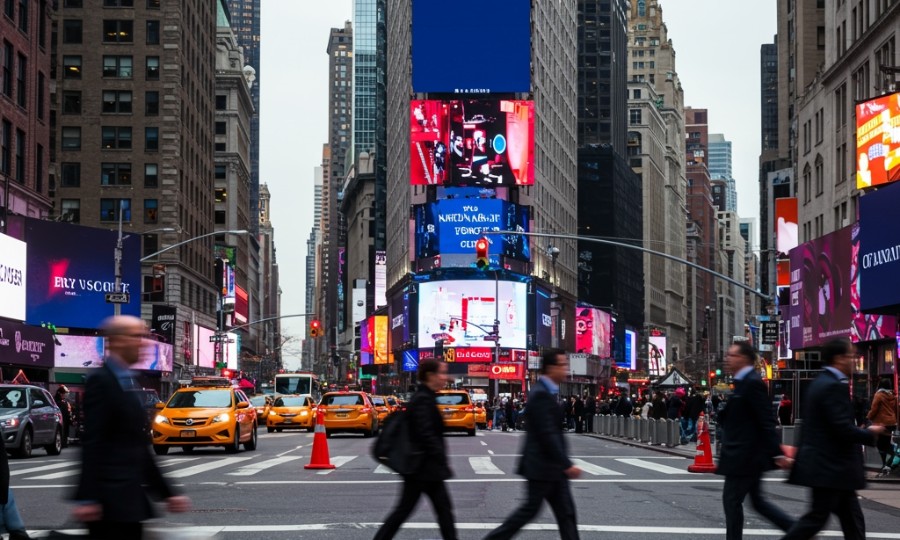
Navigating the concrete jungle of New York City, it’s easy to feel like you’re part of a constant, intricate dance. But what happens when that dance goes wrong? Ever wondered who truly has the right-of-way when you’re crossing a bustling street, or when a driver turns directly into your path? You’re not alone. Many New Yorkers, despite their daily commutes, aren’t entirely clear on the nuances of pedestrian right-of-way laws. And honestly, it’s a critical piece of knowledge that can not only protect you but also clarify your position if an unfortunate accident occurs. We’re here to demystify these complex rules, focusing on when you, as a pedestrian, have priority, and those tricky scenarios where liability might actually be shared with drivers.
Demystifying the Crosswalk: Where You Truly Have the Edge
Let’s start with the basics, because understanding these can prevent a lot of headaches (and worse). In New York City, a pedestrian’s right-of-way is largely governed by the New York State Vehicle and Traffic Law (VTL), which applies throughout the five boroughs.
Marked Crosswalks: Your Clear Priority
This is probably the clearest scenario. When you’re in a marked crosswalk and the pedestrian signal indicates “Walk” (or the traffic signal is green in your direction), you generally have the absolute right-of-way. Drivers approaching a marked crosswalk must yield to pedestrians who are lawfully within that crosswalk. This isn’t just a suggestion; it’s the law (VTL § 1151 and § 1112). They’re obligated to stop and wait until you’ve safely crossed. It’s a fundamental principle, yet we’ve all seen drivers who seem to forget it, haven’t we?
Unmarked Crosswalks: Beyond the Painted Lines
Now, here’s where it gets a little more interesting, and often misunderstood. Did you know that every intersection, even if it doesn’t have painted lines, has an “unmarked crosswalk”? It’s true! An unmarked crosswalk is essentially the imaginary extension of the sidewalks across the street at an intersection. VTL § 1151(c) states that drivers must yield the right-of-way to a pedestrian crossing within any unmarked crosswalk at an intersection, provided the pedestrian is on the half of the roadway the vehicle is traveling on or approaching it so closely that the driver can’t stop safely. This means you don’t always need those white stripes to have priority, which is a crucial detail many overlook for navigating NYC’s less-trafficked (but still busy!) intersections.
Navigating Turns: Your Priority in Intersections
One of the most common types of pedestrian accidents happens when a driver makes a turn. You’re walking with the “Walk” signal, feeling confident, and suddenly a car turns right or left directly into your path. It’s an incredibly frustrating, and often terrifying, experience.
Turning Vehicles and Pedestrians: The Law is on Your Side
The law is generally on your side here. When a vehicle is turning at an intersection, it must yield the right-of-way to any pedestrian lawfully within the crosswalk (marked or unmarked) (VTL § 1112(a)). This means if you’re crossing with the light, or even if you’re in an unmarked crosswalk at an intersection, the turning driver has a legal obligation to wait for you. They can’t just cut you off. I believe this is one of the most vital protections for pedestrians in urban environments, yet it’s frequently violated. Drivers often focus only on oncoming vehicle traffic, completely overlooking people on foot.
The “Don’t Walk” Signal and Jaywalking: When Liability Shifts
While the law heavily favors pedestrians in many scenarios, it’s not an absolute shield. There are situations where your actions can impact who holds responsibility in an accident.
Crossing Against the Signal: Your Contribution to Risk
If you cross against a “Don’t Walk” signal or a red light, you are generally violating VTL § 1112(c) or § 1152(a). In such cases, if an accident occurs, your own negligence could be a significant factor. Does this mean the driver is automatically off the hook? Not necessarily. New York operates under a system of “comparative negligence.” This means that even if you were partially at fault, you might still be able to recover damages, though your award could be reduced by your percentage of fault. It’s a nuanced point, but an important one to grasp.
Jaywalking (Crossing Mid-Block): A Shared Responsibility
Similarly, if you cross the street outside of a marked or unmarked crosswalk – what we commonly call “jaywalking” – you’re technically in violation of VTL § 1152(a). Drivers are generally not expected to anticipate pedestrians darting out from between parked cars. However, even in these situations, drivers still have a duty to exercise reasonable care to avoid hitting you. They can’t just plow through; they still need to be attentive and drive safely. So, while your actions might contribute to the accident, a driver who was speeding, distracted, or otherwise negligent could still bear a significant portion of the blame. It’s never a black-and-white situation, which is why these cases often require careful investigation.
Real-World Scenarios: Applying the Law
Let’s consider a few practical examples to illustrate how these laws play out.
Scenario 1: The Confident Crosser
Imagine you’re at the intersection of 5th Avenue and 42nd Street. The pedestrian signal clearly shows “Walk.” You step into the marked crosswalk. A taxi, aiming to turn left onto 42nd Street, suddenly accelerates, cutting you off and clipping your leg. In this case, the taxi driver has almost certainly violated your right-of-way under VTL § 1112(a) and § 1151. You were lawfully in the crosswalk with the signal, giving you clear priority. Your claim for damages here would likely be strong.
Scenario 2: The Unexpected Dash
Picture yourself on a residential street in Brooklyn. You’re trying to cross mid-block to get to a local bodega, impatient for the next intersection. As you step out from behind a parked car, a speeding delivery truck, clearly exceeding the 25 MPH limit, fails to see you in time and hits you. While you were technically jaywalking (violating VTL § 1152(a)), the driver’s excessive speed and potential inattention (a violation of VTL § 1180(a), speed limits, and the general duty of care) could mean shared liability. The driver’s significant negligence would likely reduce your comparative fault. You might be thinking this won’t work because you were “in the wrong,” but that’s precisely where comparative negligence comes in.
Scenario 3: The Distracted Driver and the Red Light Runner
Let’s say you’re hurrying across a busy Manhattan intersection against a “Don’t Walk” signal. A driver, engrossed in their phone, runs a red light and strikes you. While you were indeed crossing against the signal, the driver’s egregious actions—running a red light (VTL § 1111(d)) and distracted driving (a form of negligence)—would likely weigh heavily in determining liability. Even though you contributed, the driver’s actions were a significant, independent cause of the accident. This is why it’s so important to remember that fault isn’t always 100% one way or the other in NYC.
Protecting Yourself: What to Do After an Incident
We know this feels overwhelming, thinking about accidents, but knowing your rights is your best defense. If you ever find yourself involved in a pedestrian accident, remembering a few key steps can make a monumental difference.
- Seek Medical Attention: Your health is paramount. Even if you feel okay, get checked out. Some injuries aren’t immediately apparent.
- Document Everything: If you can safely do so, take photos of the scene, the vehicle, your injuries, and any relevant street signs or signals. Get contact information from witnesses.
- File a Police Report: An official report creates a record of the incident.
- Do Not Admit Fault: Even if you think you might have been partially to blame, don’t say anything to that effect at the scene. Let the facts speak for themselves.
- Consult an Attorney: This is perhaps the most crucial step. Navigating New York’s comparative negligence laws and dealing with insurance companies can be incredibly complex. A personal injury attorney who specializes in pedestrian accidents can help you understand your rights, assess liability, and fight for the compensation you deserve. They’ll ensure your voice is heard and your interests are protected.
Understanding pedestrian right-of-way in New York City isn’t just about avoiding tickets; it’s about safeguarding your well-being and knowing where you stand legally. While the streets can be chaotic, the law provides a framework for order and responsibility. By being informed, you’re not just a pedestrian; you’re an empowered New Yorker, ready to navigate the city with confidence and clarity. Stay safe out there!
Free Case Consultation
Injured in an accident? Contact Rosenberg, Minc, Falkoff & Wolff for a free and confidential case review with an experienced NYC personal injury attorney.


